Environmental education and enthusiasm!
OCSE talks ice cream, children’s parties and smelling koalas with Tony Cory.
Volunteer with: ParkCare Visitor Assist, Waterwatch
‘How do you get ice-cream from rocks?’ Tony asks. This question is part of a display volunteers at Tidbinbilla have created to engage younger generations with the natural environment.
‘Rocks give you minerals. Minerals give you soils. Soils give you grass. Grass feeds the cows. Cows give you milk, and milk gives you ice-cream. Now if you take one of those steps out, you break the chain and the whole process falls over. It’s the same with the environment, everything we do interacts in some way or another, and will affect something else’.
Tony has been volunteering out at Tidbinbilla Nature Reserve for seven years. He participates in academic research and citizen science, but one of his favourite things is educating young people about the natural environment.
‘That’s my love, educating and challenging children. I’m constantly amazed by the knowledge of children.’
He recalls doing a ‘Tid after Dark’ event for an 8-year-old’s birthday party.
‘We went from dusk until about 10 o’clock, spotting animals that are out at night. They were so engaged, so interested, and seeing things they wouldn’t normally see, we used infrared lights to spot bettongs and potoroos, micro bats, pygmy gliders, and the children were so amazed.’
This part of Tony’s work is special. By getting children to see animals that they’ve not seen before, he hopes to instil in them a love for the natural environment, in doing so, he is part of creating a society that cares for Canberra’s unique natural environment and about protecting our native species.
Tony values ‘educating upwards. You educate the children, they put pressure on their parents, and that goes up the chain.’
Tidbinbilla is a great place to educate people about the environment. The Sanctuary, where Tony spends time speaking with visitors, is home to potoroos, bandicoots, turtles, birds, snakes and lizards – but most people are set on spotting a platypus.
‘On a good day when you have platypus sightings, you can spend 2-3 hours watching a platypus, and you can show so many people. So many people haven’t seen a platypus, it’s about educating and engaging them, that’s what I love doing.’
‘Volunteering has grown my life. As an army officer, I was commander, a leader. My role was to ensure my soldiers were trained so they could survive war. When I moved across to the public service, I became a director, a manager. My role was to educate and train people. Now, in my role as a volunteer, I’m a mentor. I’m trying to educate people. All my careers have changed me, but they are all about leading, mentoring, and caring for people, something I continue to do and love doing. I feel I still have so much to give, and I still can and still do.’
As part of his work out at Tidbinbilla, Tony is a volunteer interpreter, ‘you interpret the landscape, you’re educating people and getting people to connect to it, so people can understand how what they do impacts the environment.’
In addition to volunteer interpreting, Tony works on a range of projects, ‘I’m doing about four different roles out there at the moment’ he shares.
At Tidbinbilla, he works with researchers to monitor platypus, does water quality monitoring with Waterwatch, surveys macroinvertebrates in the reserve’s ponds, and works with ACT Government to deliver school holiday activities.
Through his work as a volunteer interpreter, Tony met Cristy Froehlich one day in the Sanctuary. They got talking and he found out she loved macro-photography.
‘I asked, are you interested in photographing some of our bugs?’
Tony explained the work he and some others were doing on monitoring the macroinvertebrates of Tidbinbilla’s ponds.
‘Cristy now comes out monthly and takes some amazing and detailed photographs of the macroinvertebrates that we capture. An exhibition of Cristy’s photographs is planned at the Tidbinbilla Visitor Information Centre once the ACT comes out of its Covid 19 lockdown.’
These photos will show a wide audience the work Tony and others are doing at Tidbinbilla, work that usually exists behind-the-scenes and under the water. Volunteers like Tony and Cristy bring their different skills and talents together to do great work, that’s one great thing about volunteering, everyone has something different to offer.

Another interesting thing Tony does is help visitors spot free ranging koalas on Tidbinbilla’s Eucalypt Forest walk.
He goes to the area in the mornings to spot the koalas and puts up signs along the trail so visitors can more easily see a koala. Spotting koalas is no easy task, but Tony has a trick up his sleeve – he has developed a special ability to smell the koalas.
‘I regularly smell them before I see them. I spend time standing at the small enclosure where the breeding group is, and just get used to that smell. It’ll take me two and a half hours to do the trail. Walking forwards and backwards, smelling.’
It sounds bizarre, but it is reported that koalas have a distinct odour. Male koalas have a scent gland on their chest which they rub on trees, and female and juveniles have a distinct musky smell. Some people even say they smell like eucalyptus drops.
Tony volunteers because he loves doing it. ‘It’s a unique environment we’re in here and it really is great to be a part of it.’
‘People who aren’t volunteers might not realise the love and satisfaction you get from volunteering. It’s a unique environment, and something you don’t ‘have to’ do, or even feel obliged to do, it’s more about doing it for the love of it.’



